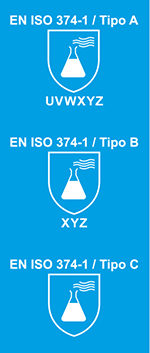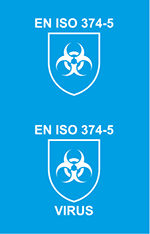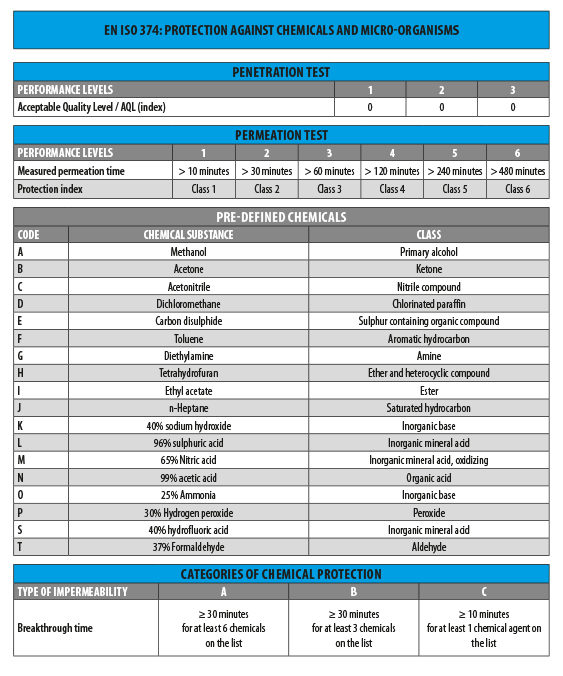EN ISO 374
Protection against chemicals and micro-organisms
The standard is described in the following 2 parts of the same:

EN ISO 374-1
The standard specifies the requirements of gloves intended to protect the user against dangerous chemicals based on three test methods:
- Penetration test: i.e. the passage of a chemical substance or a micro-organism through the porosity of the materials, seams, possible micro-holes or other imperfections of the protective glove. A glove must not show leaks when subjected to air and water tightness tests and must be tested and checked in accordance with the acceptable quality level (AQL).
- Permeation test: i.e. the passage of a chemical substance through the material of the protective glove at a molecular level, that is, the time taken by the liquid to come into contact with the skin is measured.
- Degradation test: that is the alteration of the physical properties of the glove in contact with a chemical agent, for example flaking, swelling, disintegration, embrittlement, discolouration, a change in appearance, hardening or softening. The exposure to the test chemical should be 60 minutes. The outcome of the degradation test must be declared in the information note.
Chemical protection gloves are divided into three categories: Type A, B and C. The related pictograms and markings describe the type of chemical resistance and the level of performance obtained.

EN ISO 374-5
The standard specifies that gloves used to protect against bacteria and fungi, to which the biohazard pictogram is applied, must have passed the penetration test (impermeability). An additional viral penetration test must be carried out for virus protection. Should the glove pass this additional test, the word “Virus” is added under the previous pictogram.


























































